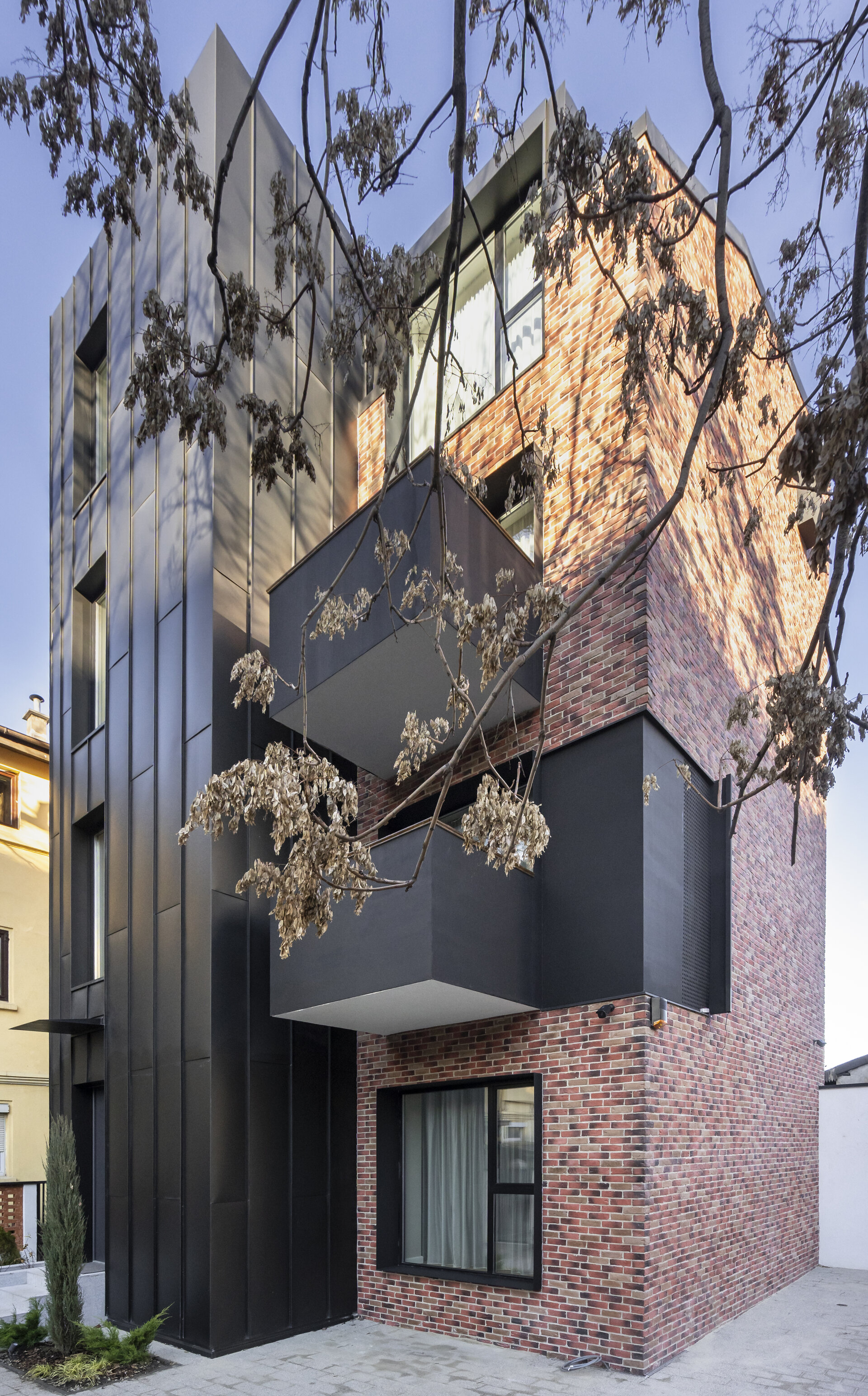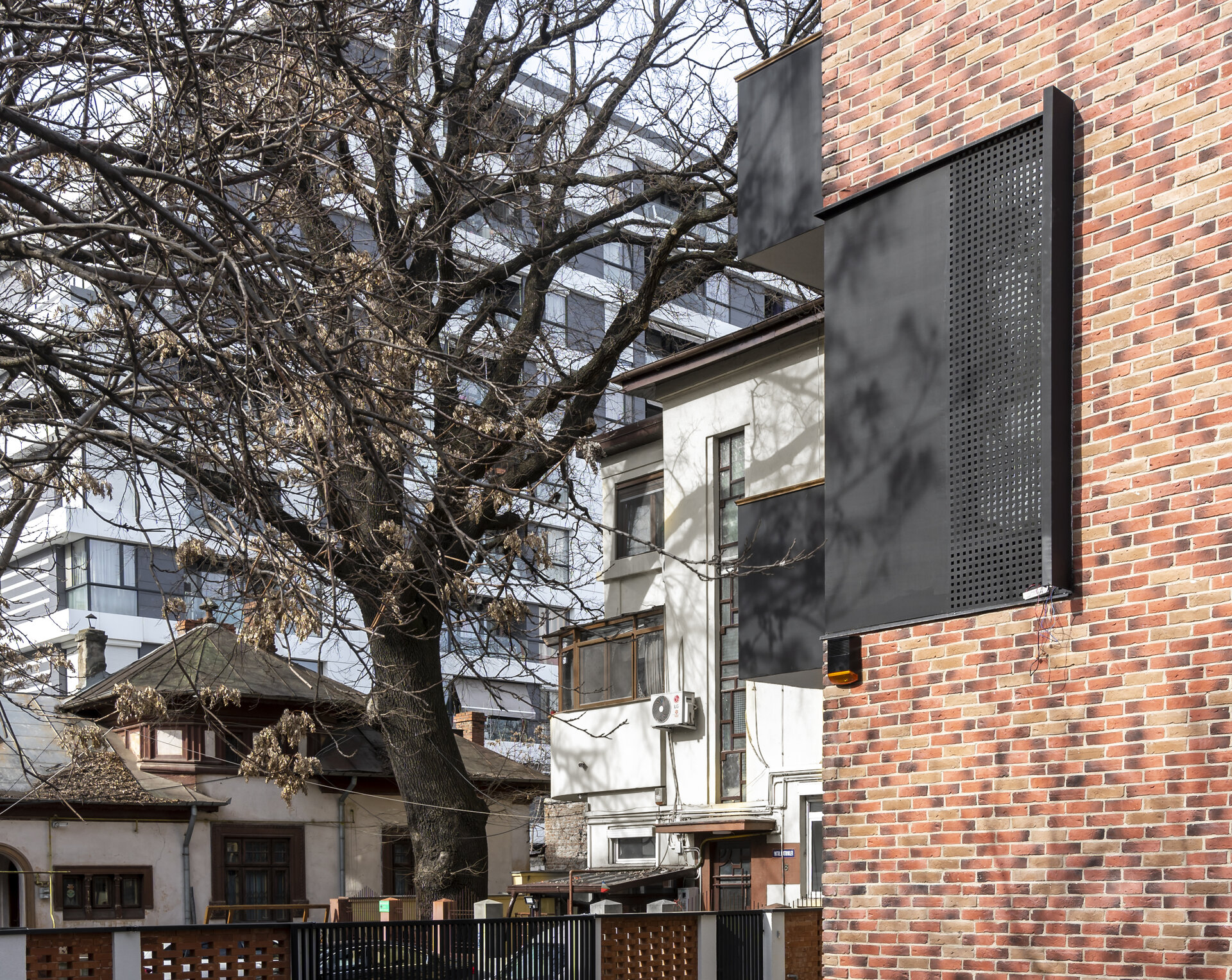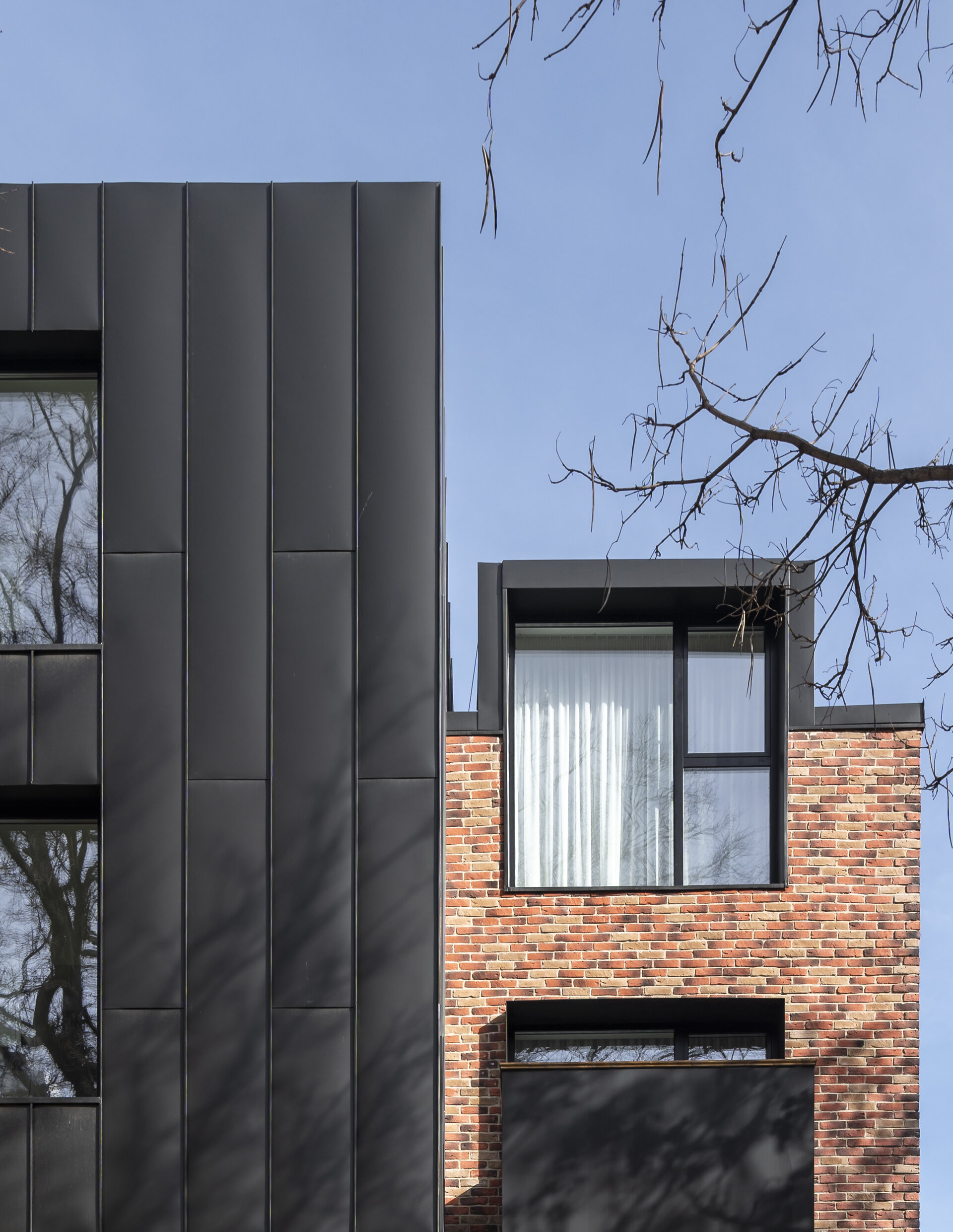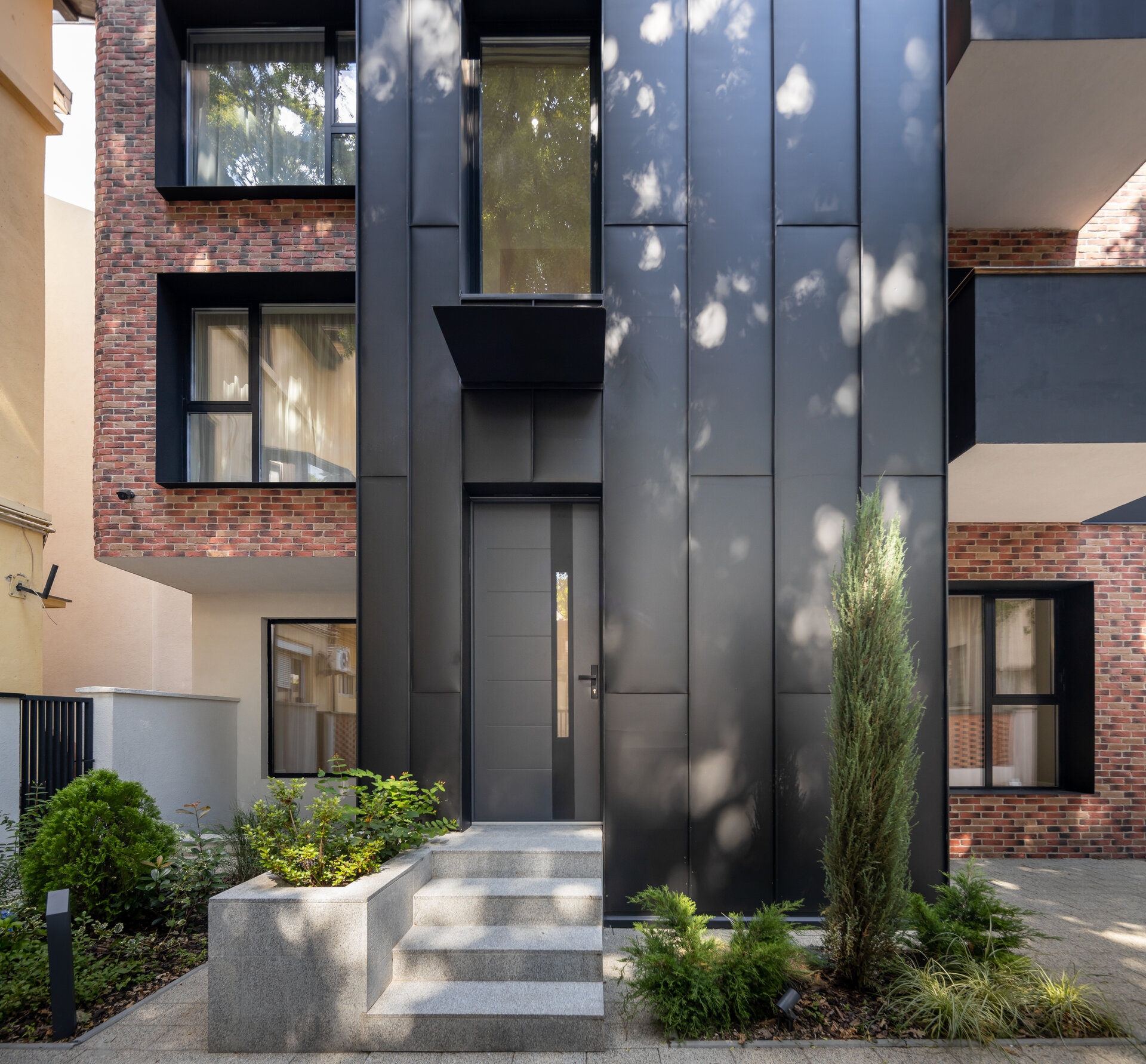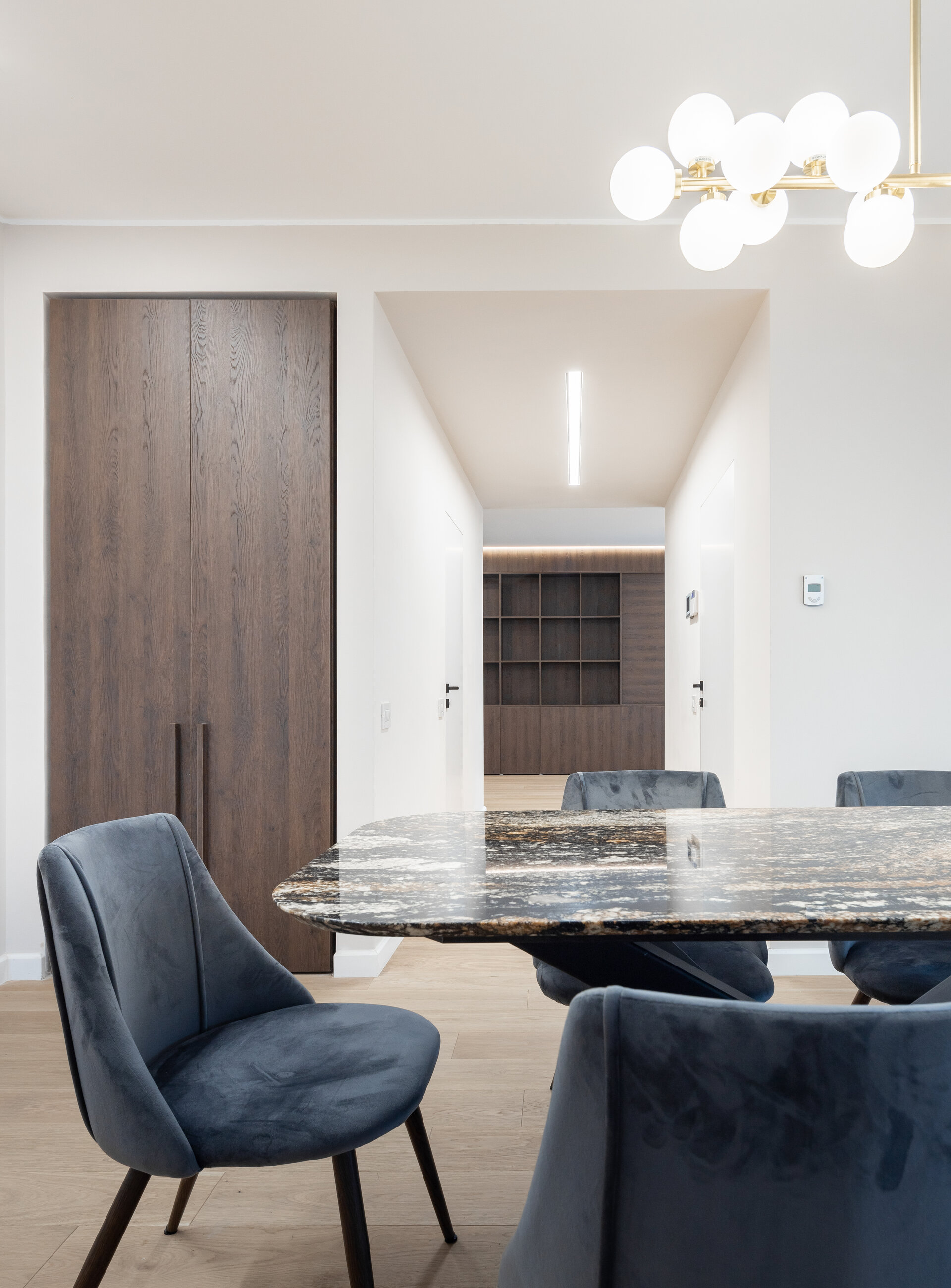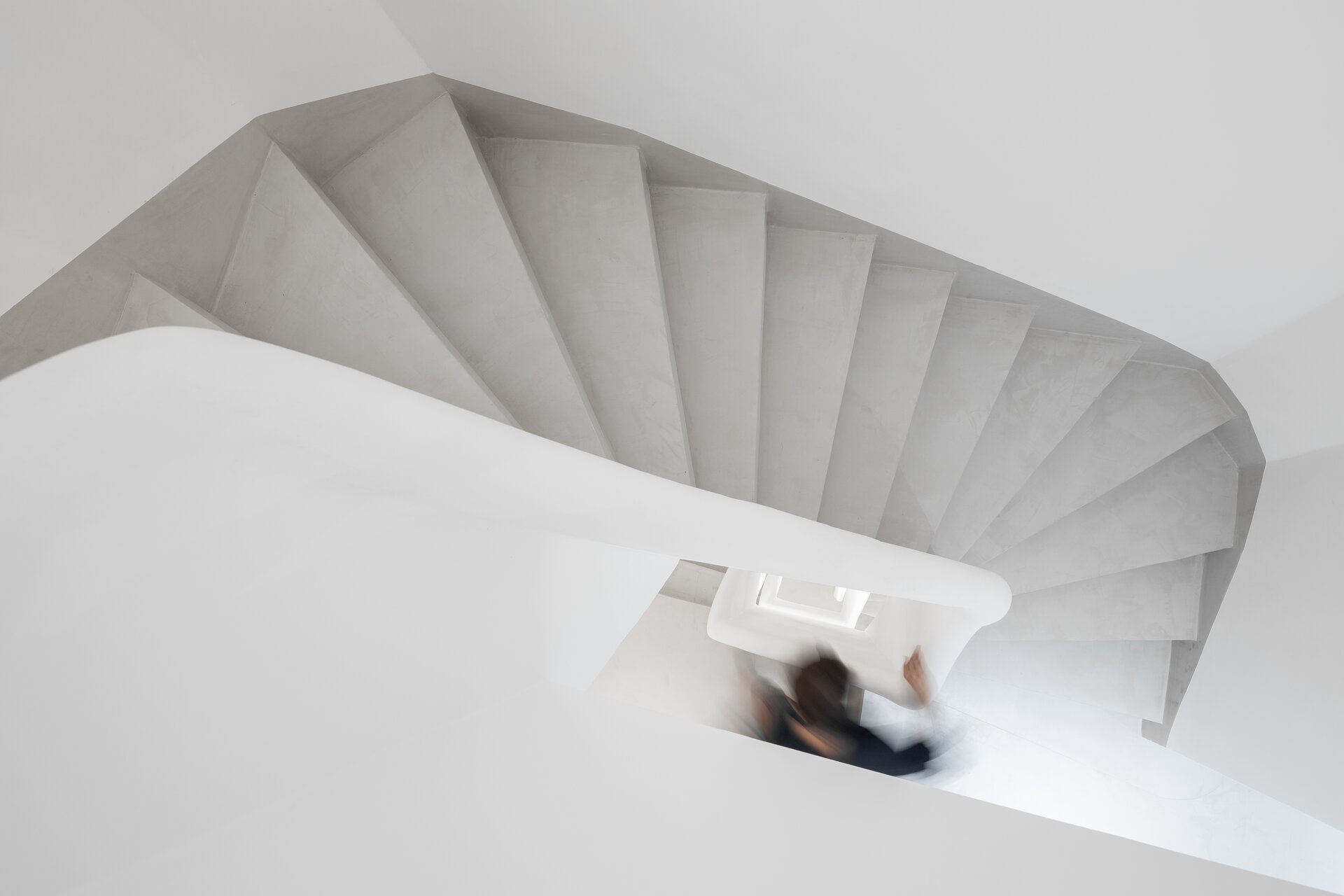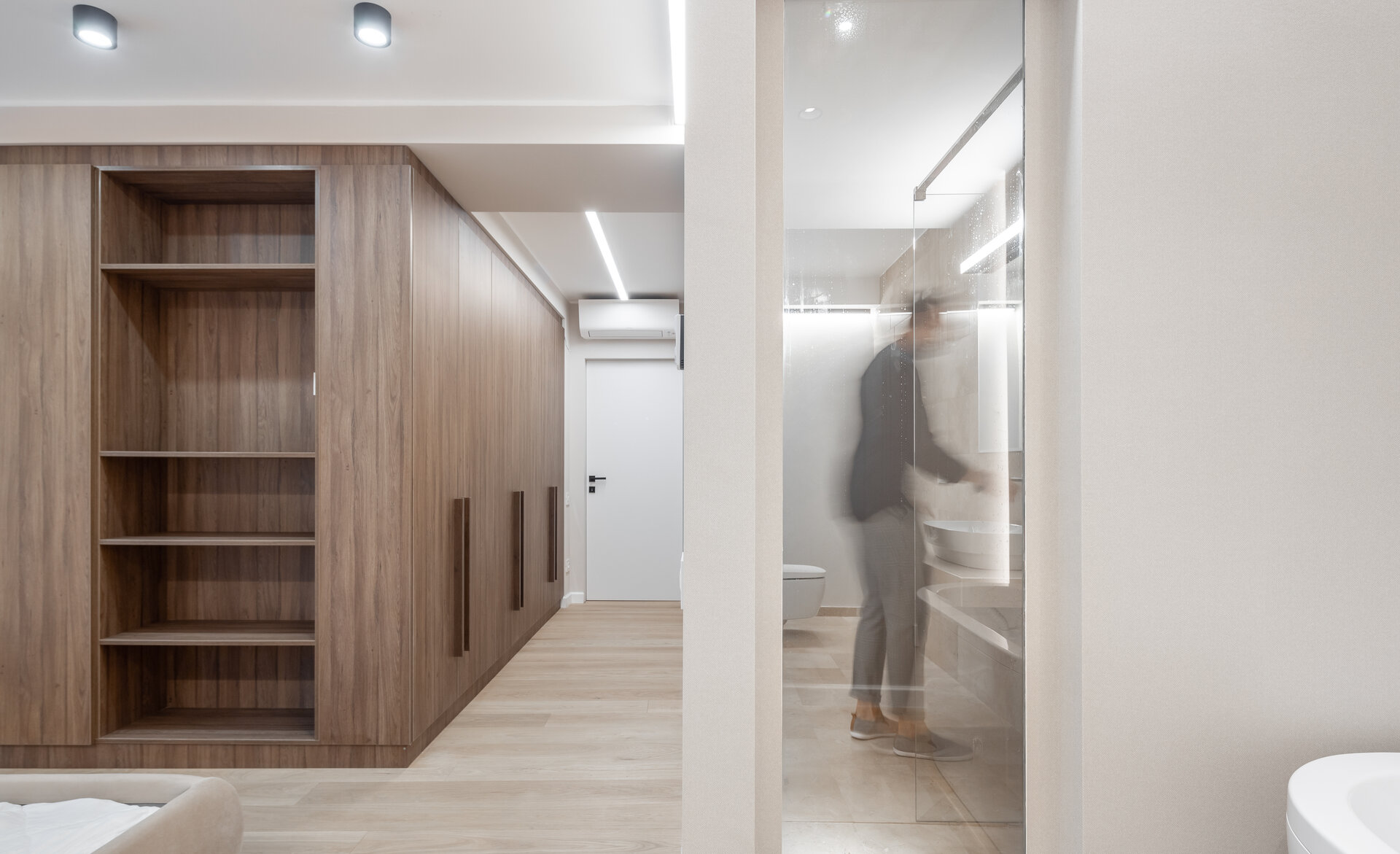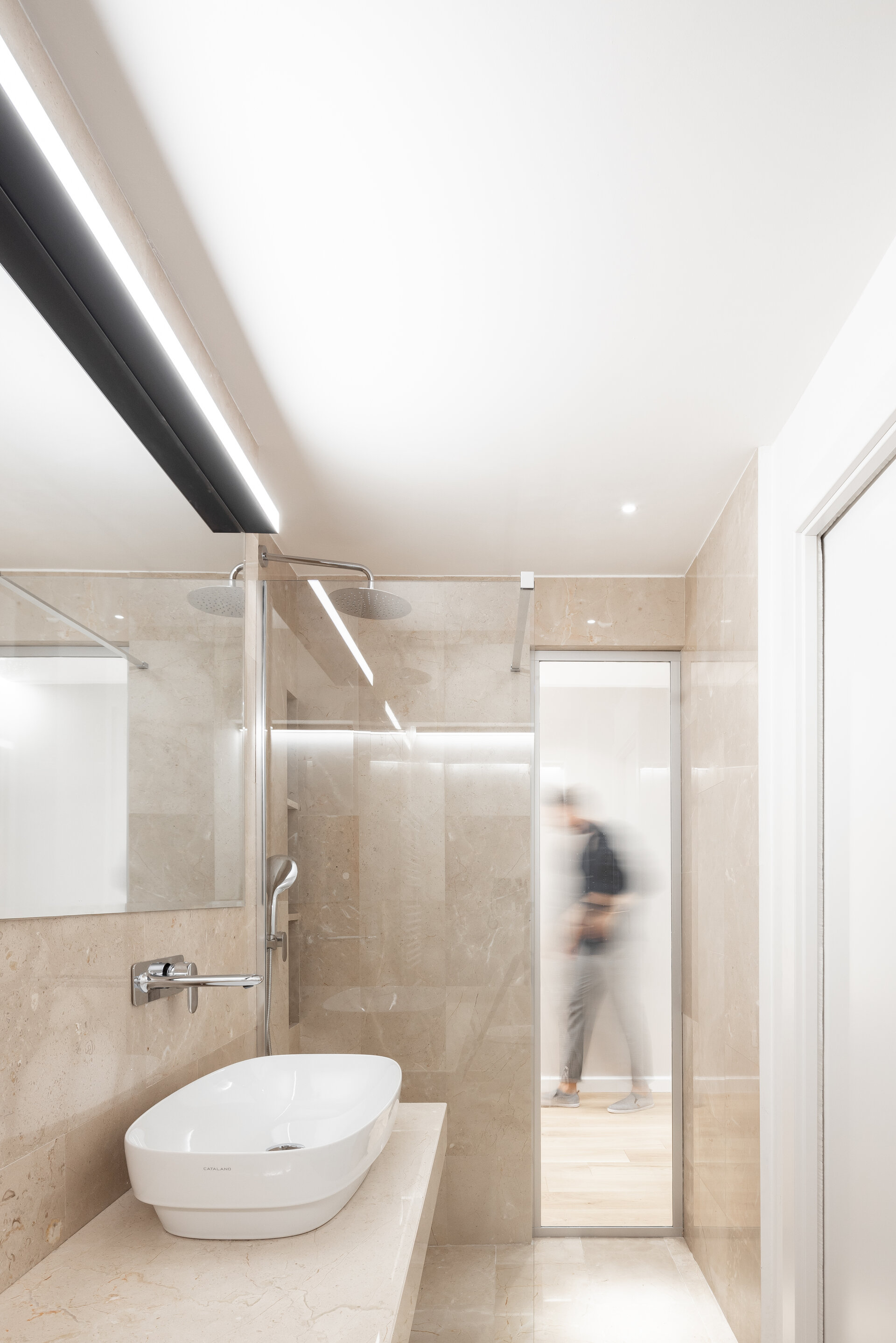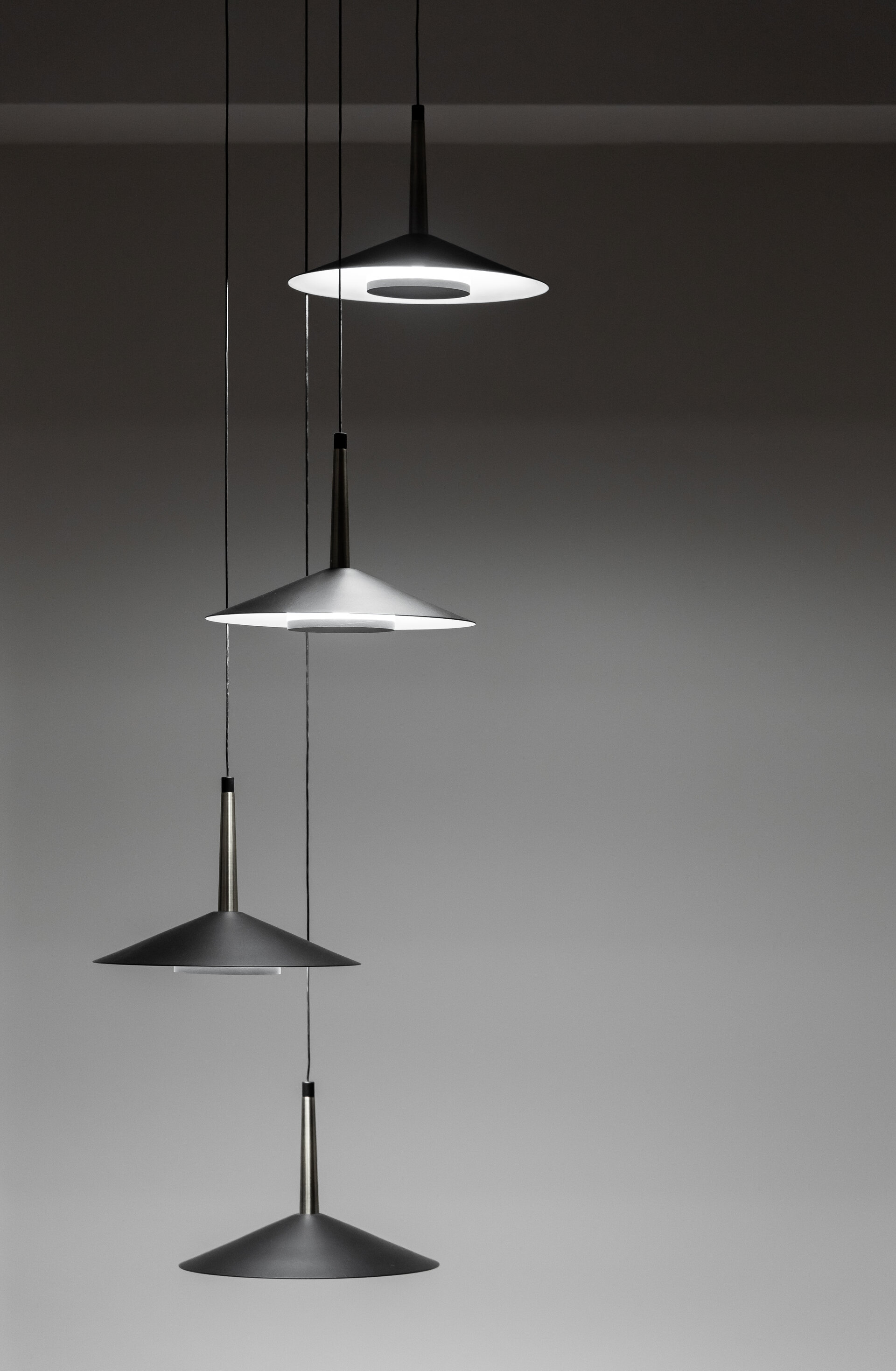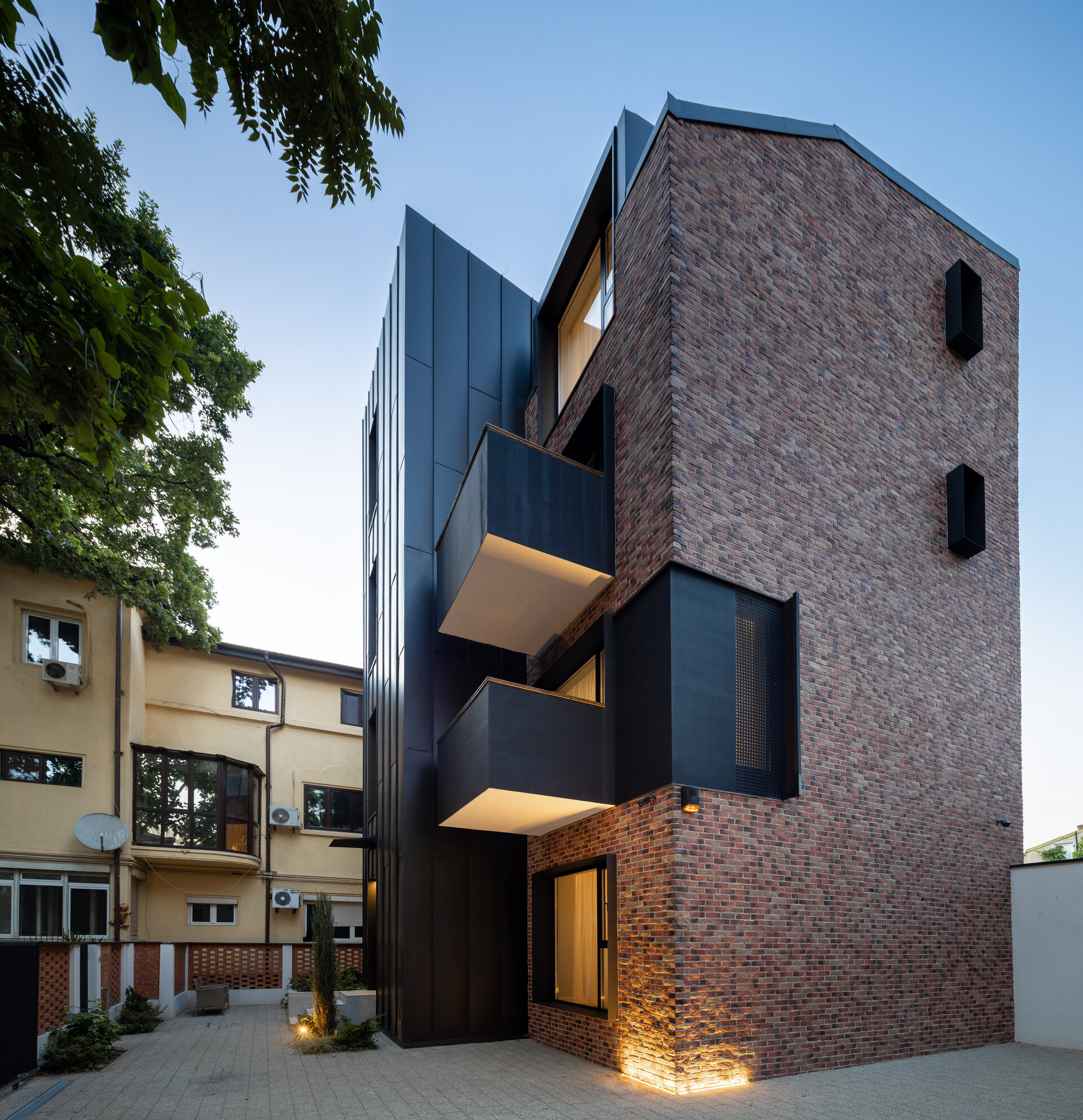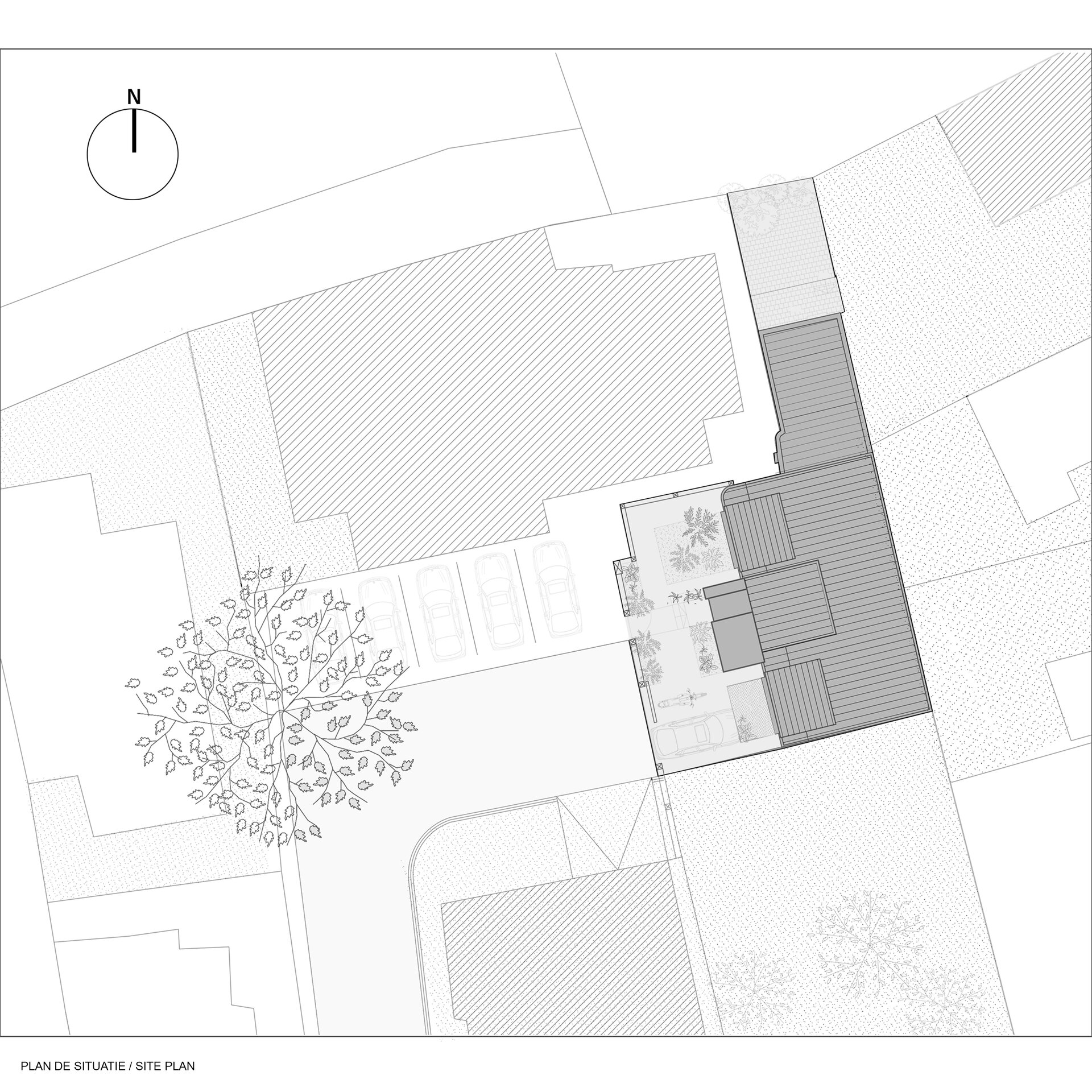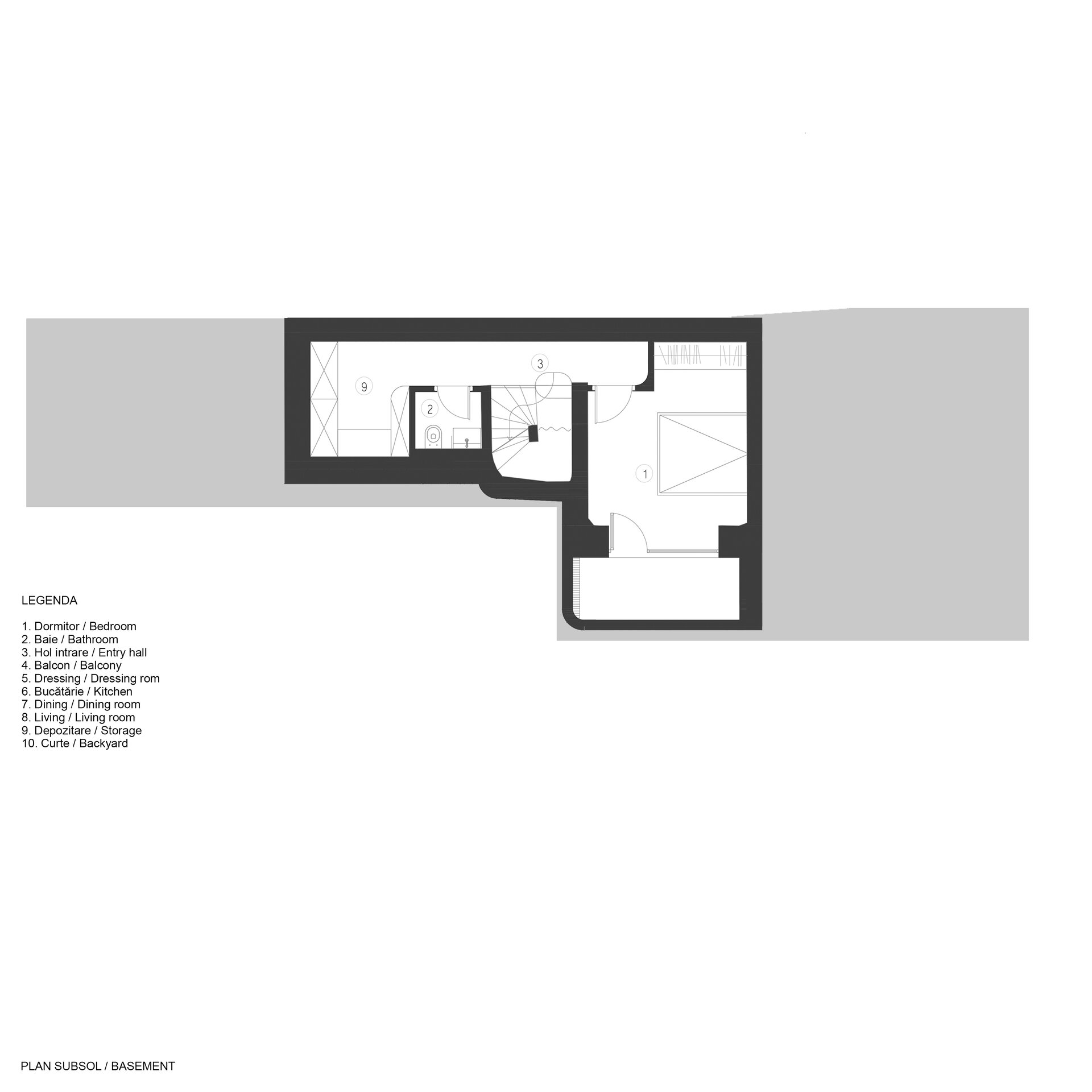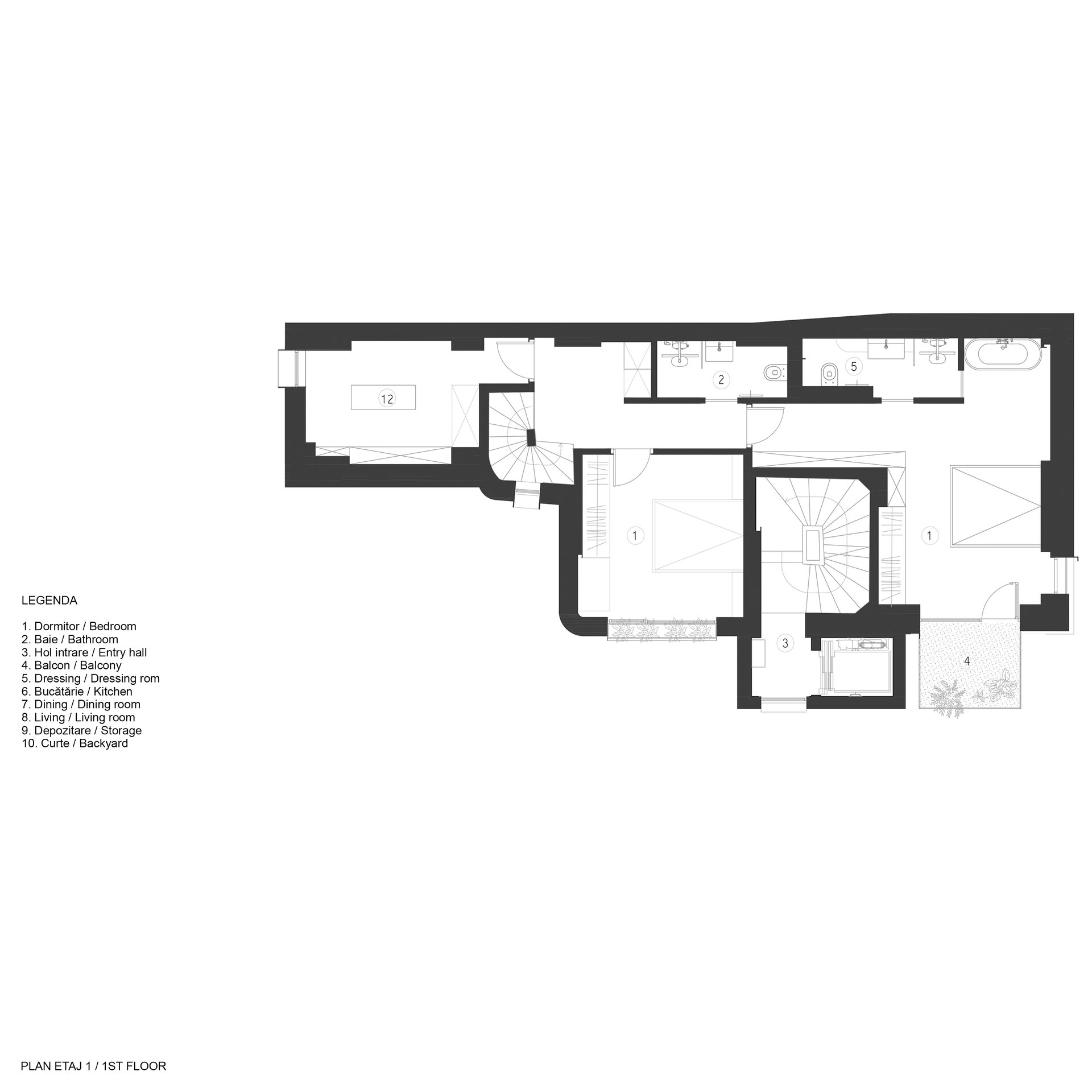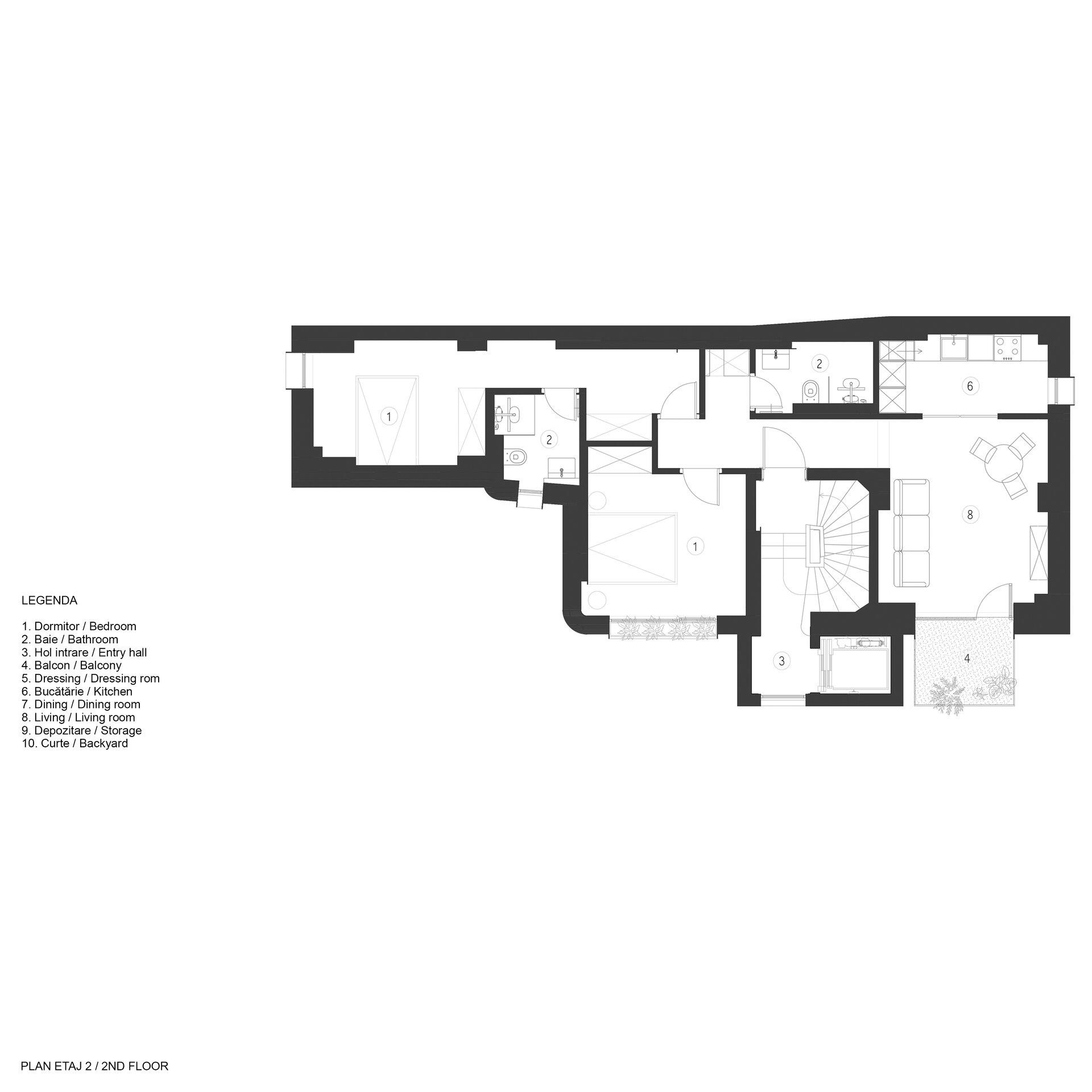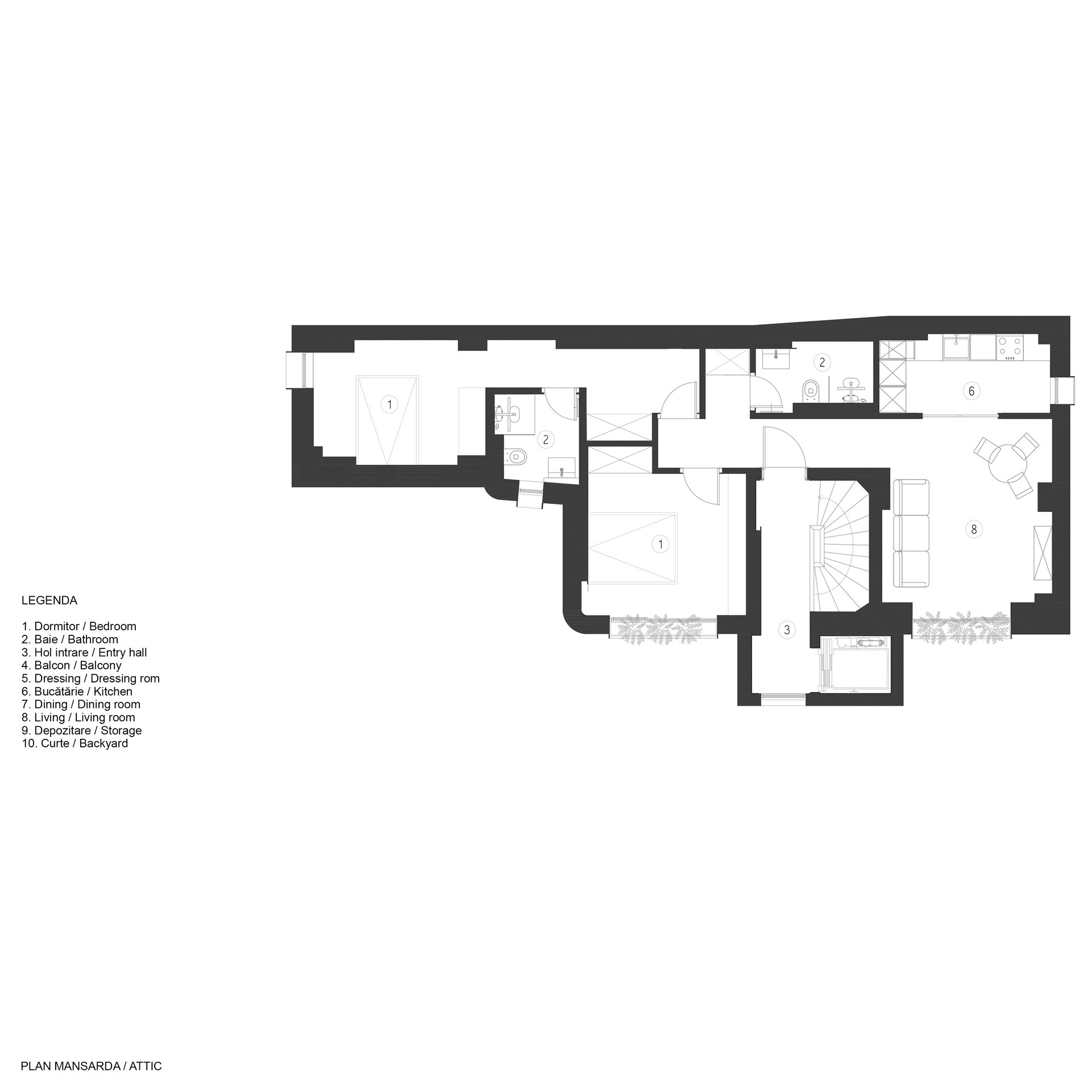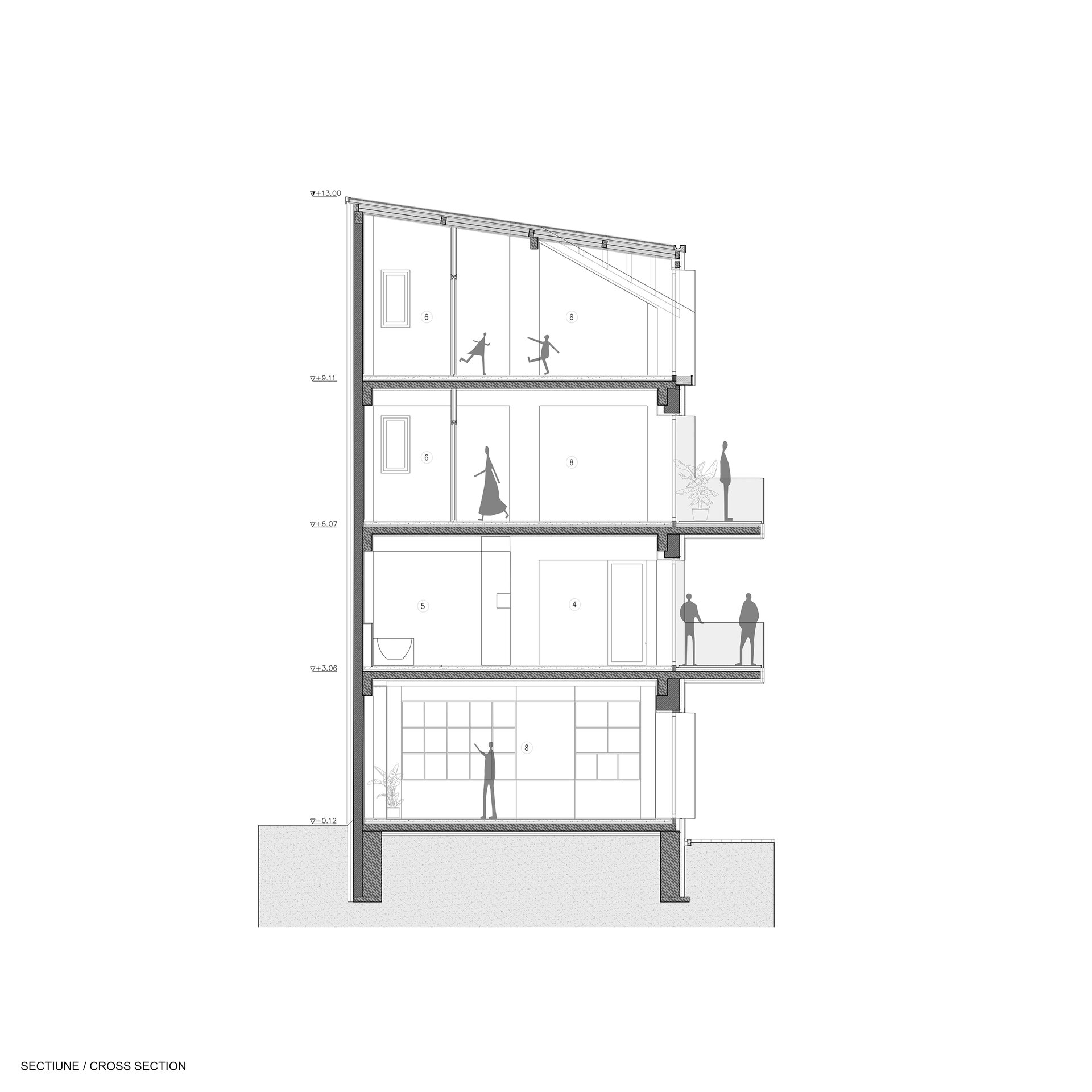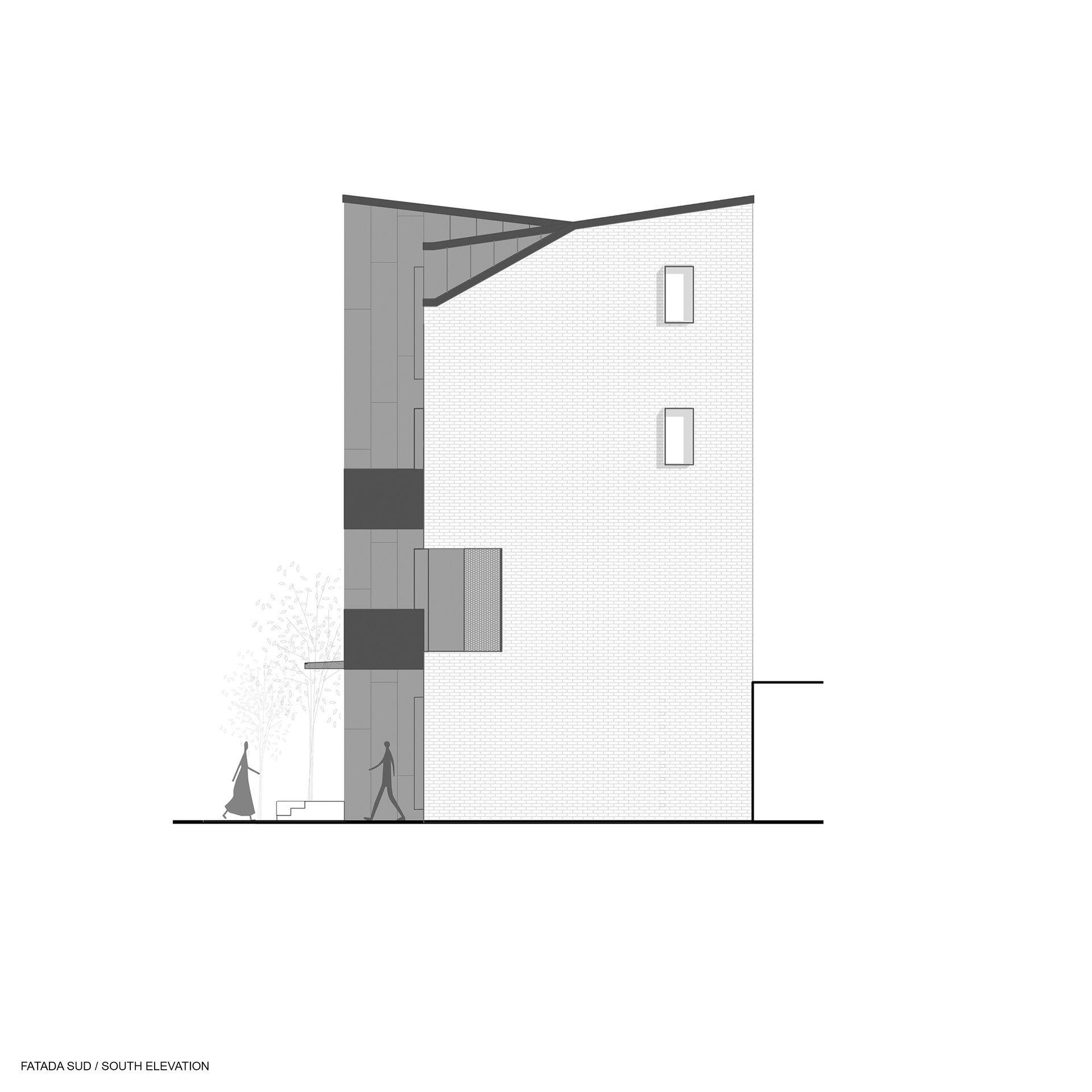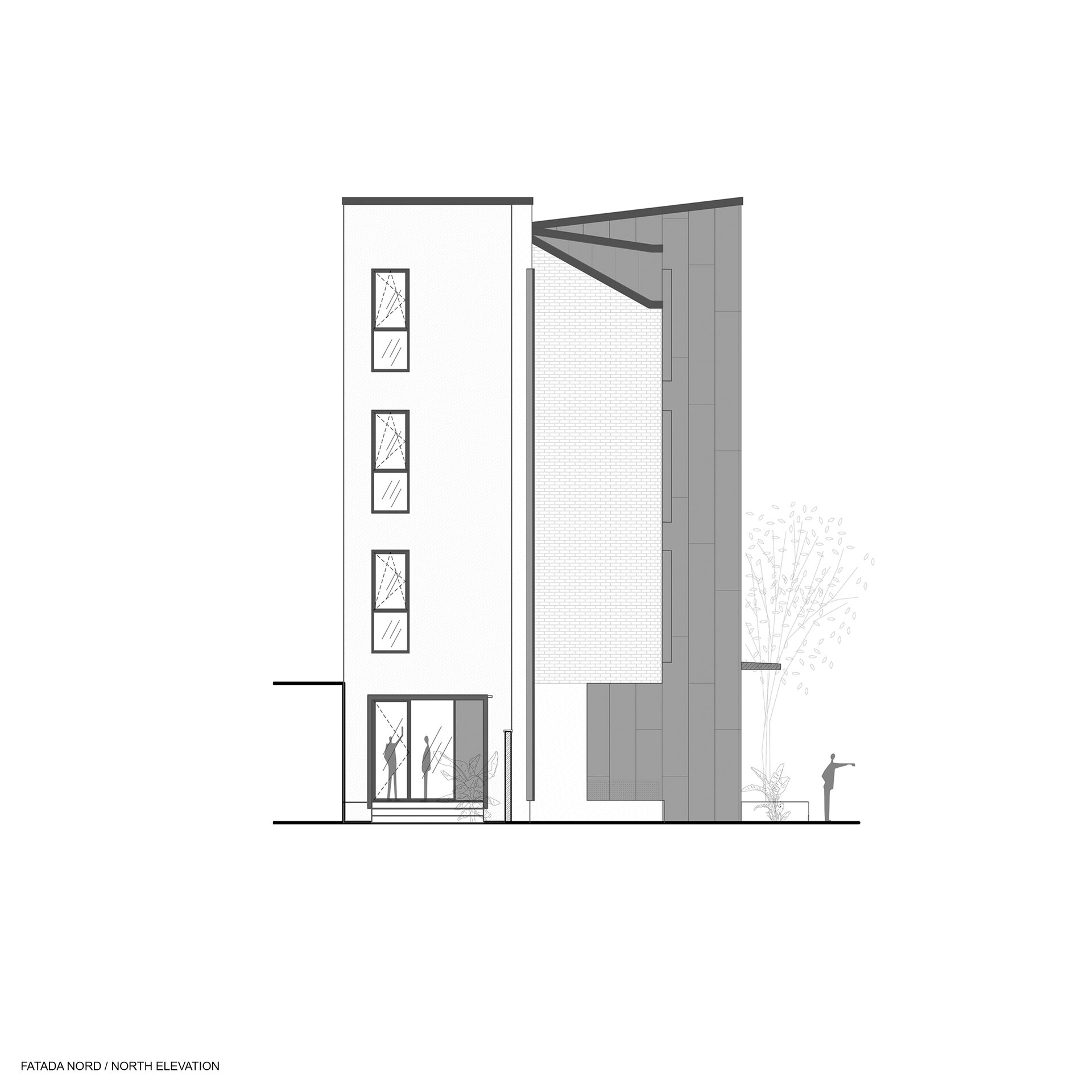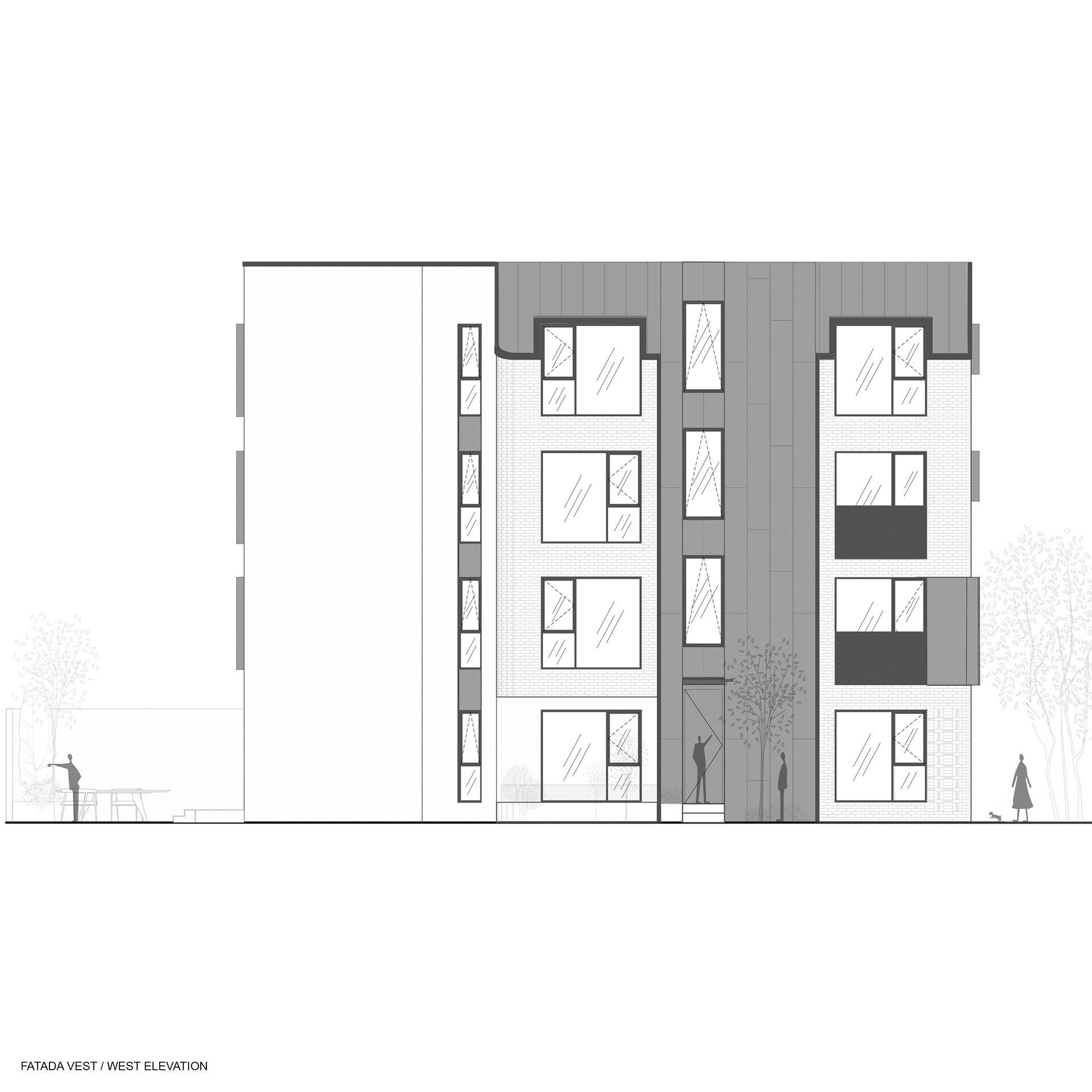
- Nomination for the “Built Architecture / Collective Housing Architecture” section
Patrulei
Authors’ Comment
Enduring vertical dwelling with interwar memories
The renovation, consolidation, repartitioning, refurbishment and technical modernization of a small interwar block of flats became an opportunity to capitalize on the heterogeneous spirit of the place and explore a vertical dwelling model for several generations. A new minimalist architectural image intertwines the attention for spaces that make the transition between interior and exterior in Bucharest's dewlling, with a preoccupation for durability and expressiveness concerning construction materials and original details.
A difficult and heterogeneous context
The urban block formed by Călărași, Delea Veche and Popa Nan streets reflects a typical complexity of the building texture in the central area of the city, with a Balkan specificity: heterogeneous volumes and functions, contrasting visual aspects, along with the rich relationship between houses and their courtyards. The outer limits of this urban block capture the pedestrian urban perception through a typological and scale variation of the built masses. The ten-level apartment blocks from the socialist period flatten the southern boundary, while on the western and northern sides there are rows of single-level “wagon” type houses, dating from the end of the 19th century and the beginning of the 20th century. The eastern side of the urban block and its interior offer the most amalgamated urban image, with an excessively weakened order of the higher apartment blocks recently built among interwar residential buildings of medium or low height. The shape and especially the size of the urban island required the construction of a small blind alley, with later extensions, such as Intrarea Patrulei, for access to irregular and complicated lots inside this perimeter.
The location of this project carried out by the Studio3plus team is found in such a situation, at number 6 on Intrarea Patrulei. The existing interwar block with 3 levels and attic, on which the renovation took place, occupies an “L” shape plot of 189 sqm, following a similar configuration resulting from the mandatory zoning, with a blind wall on the south side, but without other neighboring buildings attached here, on a ground footprint of only 106 sqm. On the other hand, the neighboring building to the west, at number 8, “pushes” the volume at number 6 and in fact determines its specific alignment, conditioning the isolation of its inner courtyard to the north. The perspective background of Intrarea Patrulei is dominated by a secular oak that envelops the entire interwar building and its all three neighboring houses: the place becomes spectacular through this visual presence that gives identity to the urban block interior.
Intensification of the transition spaces between interior and exterior
Consolidating this interwar building implicitly aimed at a transformation of its existing architectural image which previously lacked a significant stylistic value. The small block of flats was deeply altered by the improvised interventions of the former owners, especially in the attic area. The intervention coordinated by Studio3plus represents structural consolidation, repartitioning, remodeling the facade, equipping it with an elevator attached to the main staircase on the existing footprint of the building and inserting open balconies. The program coagulates the idea of a home with new values, adapted to a differentiated and flexible approach to functionality. First of all, the interior spaces opened to the three remodeled courtyards, giving them uniqueness: to the north (inner courtyard), west (access courtyard) and south (extended courtyard for car access). The large windows bring a brightness to the rooms and strengthen their connection with the densely built exterior characterized by visually contrasts, but full of character. To the west, the secular oak image is highlighted, and to the north, the ground floor living area with the kitchen benefits from its own terrace in the inner courtyard, imagined as a perspective end of the kitchen, becoming a friendly space by adding a pleasant built-in planter. Giving more attention to the transition spaces between interior and exterior proves the designers' interest in semi-private or semi-public areas that Bucharest's pre-war or inter-war housing showed abundantly through remarcable precedents for what we now call “historical built texture” or “old town”. The living room, for example, does not lack access to a small green area to the west, perceived from the dining area. A columnar fir tree planted in front of the elevator vertical volume, near the entrance, becomes a symbol of the courtyard and of the vertical development of the house, as in other modernist examples in the central area of Bucharest. New dormer windows amplify the archetypal references to the third floor, so as to remind the viewer that they completes the growth of the house to the sky in a manner specific to the attics, also opening the view to the wider context of the city. The ground floor plan configuration is distinguished by “telescoping” the spaces on the west and north sides punctured by the main windows. The west side amplifies a differentiation of the facade through the elevator vertical presence and the two accesses, main and secondary, according to the well-known interwar model. On the 1st and 2nd floors, a 4 sqm balcony added to the living rooms produces an important space for transition to the outside, overlooking the entrance courtyard and the majestic oak.
Complex reorganization and dwelling flexibility
All spaces refunctionalization involved a series of major interventions inside, on three registers. The first of these concerns the main apartment which occupies the basement (technical area with a sunken courtyard for light), the ground floor (day area) and the first floor (night area), with access to the private inner courtyard from the north. An entrance hall with the main staircase (extended to the 3rd floor) and the added elevator offer direct access to the living room to the south and to the living room to the north. The secondary staircase separates the living room from the kitchen with access to the courtyard terrace. Isolating the night area on the first floor offers the advantage of privacy compared to the day area on the ground floor. The master bedroom has its own open bathroom designed to provide a special quality to this room, while the smaller bedrooms have access to a separate bathroom from the common hall where the secondary staircase leads.
The next two registers of interior organization refer to the two individual apartments on the upper floors, with 3 rooms each (living room and two bedrooms), accessed by the main staircase with elevator, from the lobby on the ground floor. All three apartments are designed in the scenario of a dwelling for a single family that can work from home (the 3rd floor becoming an office in this case) and which offers independent spaces for parents and children. The interruption of the secondary staircase on the 2nd and 3rd floors allowed in the vacated space the arrangement of bathrooms for the night area at the additional apartments.
Durable envelope and careful detailing
The intervention on the existing building involved, in addition to the structural consolidation, a remodeling of the facades and an interior design with a unitary language, expressed by the concern for the smallest details. On the outside, the replacement of the degraded plaster with an apparent brick masonry (also used to fence the entrance courtyard) makes a reference to interwar examples that use this material with great durability and visual expressiveness. Metallic sheet panels with an angled standing seam system cover the roof and the elevator vertical volume, while the custom-made ornamental metal cladding of the same color discreetly highlights the new windows and the delicate awning at the entrance, in a contemporary way. The minimalist interpretation of all surfaces attracted an effort to precisely control the brick wall stereotomy at the main facades and the geometry of the joint lines to the modulated metallic sheet panels. Made of granite, the entrance steps together with built-in planter make up an abstract volumetric composition, obviously reminiscent of the way the masters of interwar modernism treated the entrance hall spatial composition at residential buildings, by integrating the finishing of the floors with panelling or socles at the vertical surfaces. The interest for an exterior envelope made of materials able to last as long as possible, to age beautifully and to express sensitivity to the heterogeneous context of Bucharest, comes in anticipation of a concern for the addition of natural materials also to the interior: natural stone in bathrooms, kitchen and inner courtyard terrace on the ground floor; wood at the integrated furniture in the rooms and at the multilayer parquet floors with intelligent remote control system, electronically controlled from the mobile phone. The elements of interior carpentry, special wallpaper, custom furniture, ceramic sanitary ware and lighting fixtures with design concept successfully complete an elaborate image of the interior characterized by a certain preciousness of surfaces and details. The main interior staircase, extended and restored, is the element that transmits the strongest historical character of the house: modernism as an episode of the past that is now remembered, revalued, reinterpreted.
The significance of a context-sensitive renovation
It is not the first time that Studio3plus intervenes on interwar buildings in Bucharest valuable contexts. We remind the previous projects of this team: SavArt, villa in 7 Washington Street (original design by Octav Doicescu), the house in Calea Lacul Tei allotment, and the building in Louis Blanc Street, which now houses Dr. Leahu Space Academy. The interwar heritage does not always bear the plaque of “historical monument” and is not always a luxury villa designed by a master of our profession. The building located in Intrarea Patrulei no. 6 did not attract any special attention before the renovation, but now we understand it as a piece that significantly contributes to the continuity of the interwar spirit of a place full of differentiations, variety and richness in terms of dwelling qualities. This renovation subtly mediated these qualities between interior and exterior, amplifying the features of the place. It raised the quality level to higher level, not only by the preciousness of finishing materials and by the design effort in detail, but especially by exploring a new model of more flexible housing, open to intergenerational use and working from home in a current economic and health context so difficult. This project finally confirms the fact that a good renovation works with the existing “banal” heritage, transforming it with sensitivity and reactivating it without nostalgia, with a lot of attention and concern for the historical identity of the city.
- Urban Spaces – Badea Cârțan 13
- La Gloire Varșovia Street
- Patrulei
- Apartment building on Calderon Street
- Mărășești 125
- The Corner Floreasca
- Housing by the sea / Aviatorii Residence
- Central District 4 Elements
- Avangarde VII
- Apartment building on Av. Mircea Zorileanu Street2020
- Evocasa Armonia: Rebreanu Residential Development
- MRS Residence Ploiesti
- Apartment building in Brasov
- Apartment building in Timisoara
